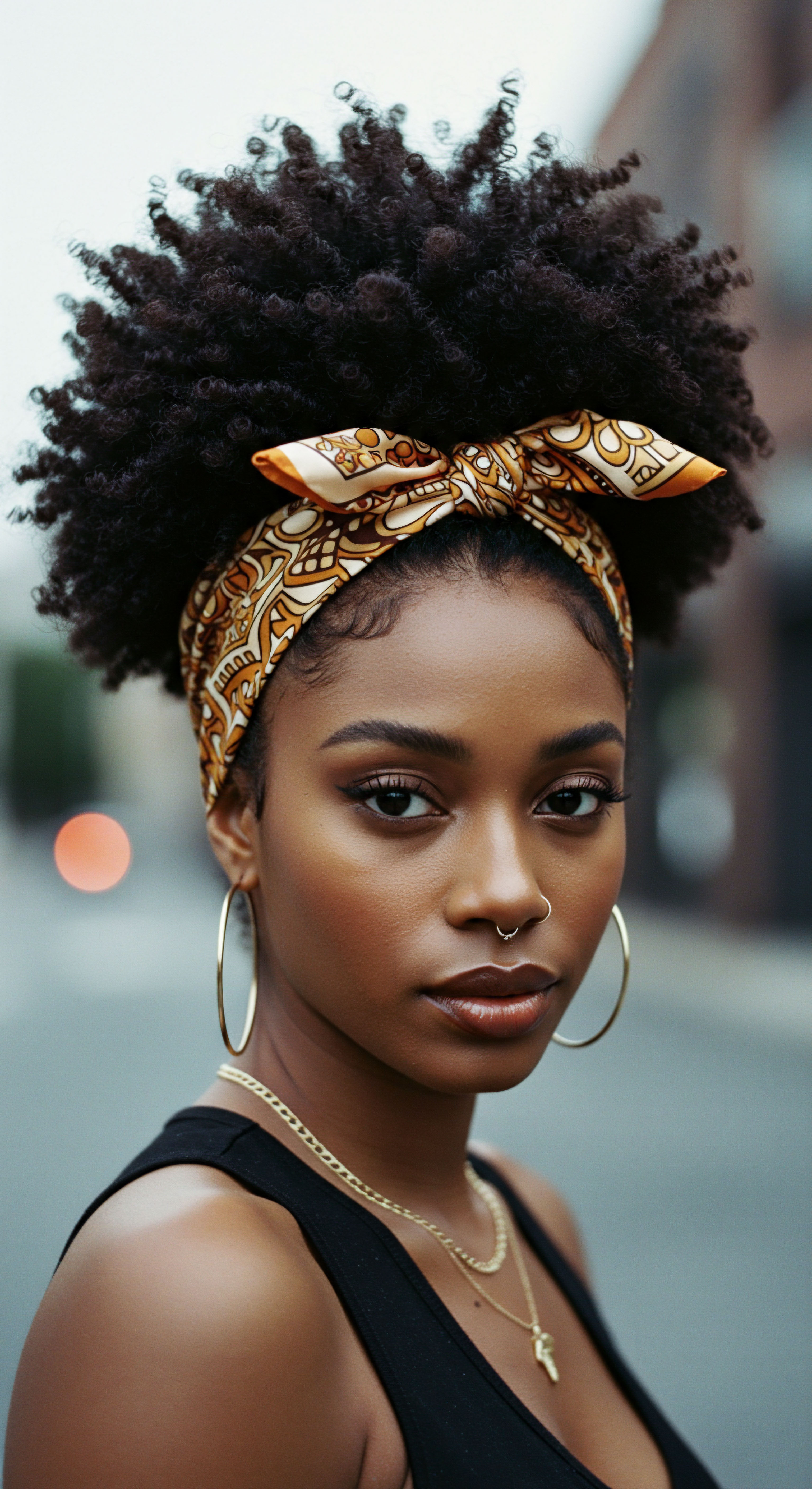
Roots A Foundation For Understanding
The journey toward understanding our textured hair often begins not with a product, nor with a technique, but with a quiet curiosity about its very essence. It’s a gentle inquiry into the strands that spring from our scalp, each a testament to a rich lineage and a unique biological blueprint. Before we can truly care for these remarkable tresses, before we can celebrate their distinct coils and curls, a foundational knowledge of their inherent structure becomes a guiding light. This section seeks to peel back the layers, inviting a deeper connection with the very fabric of textured hair, recognizing that within this understanding lies a quiet power to affirm and, ultimately, to uplift our well-being.

What Constitutes Textured Hair’s Anatomy?
At a microscopic level, the architecture of textured hair distinguishes itself from straight hair in several key ways. The follicular opening, the tiny pore from which each strand emerges, is often elliptical or flattened, rather than round. This shape dictates the way the hair shaft itself grows, influencing its curvature. As the hair grows, it twists and turns, creating the familiar coil or curl pattern.
This unique growth pattern means that textured hair often possesses fewer cuticle layers, the protective outer scales, particularly at the curves of the strand. This can make these points more vulnerable to breakage and moisture loss, a fundamental insight for any care regimen. The medulla, the innermost core of the hair shaft, can also vary in its presence and continuity across different textured hair types, further influencing the strand’s strength and resilience.
Consider the intricate dance of keratinocytes as they ascend from the hair bulb, hardening and shaping into the distinct form of a textured strand. This cellular choreography, guided by genetic predispositions, dictates not only the curl pattern but also the hair’s diameter and density. A singular strand of coiled hair, viewed under magnification, reveals a series of delicate undulations, each bend a potential point of fragility. Understanding this inherent design fosters a gentler approach to handling and styling, recognizing the hair’s natural inclinations rather than attempting to force it into forms that defy its intrinsic character.
A foundational understanding of textured hair’s unique microscopic architecture is the first step toward genuine affirmation and informed care.

Deciphering Textured Hair Classification Systems
The language we use to describe textured hair has evolved, moving beyond simplistic labels to more nuanced systems that attempt to categorize the spectrum of coils, curls, and waves. While no single system is universally perfect, the most widely recognized often uses a numbering and lettering convention (e.g. 3A, 4C) to describe curl pattern from loose waves to tight coils.
- Type 1 ❉ Straight hair, typically not textured.
- Type 2 ❉ Wavy hair, with a gentle S-pattern. This type is further divided into 2A (fine, barely wavy), 2B (medium, defined waves), and 2C (coarse, defined waves with some frizz).
- Type 3 ❉ Curly hair, forming distinct loops or spirals. Categories include 3A (large, loose curls), 3B (springy, well-defined curls), and 3C (tight, corkscrew curls).
- Type 4 ❉ Coily hair, characterized by tight, zigzag patterns or small, compact coils. This type is often the most delicate and prone to shrinkage. It includes 4A (tight, S-shaped coils), 4B (tight, Z-shaped coils), and 4C (very tight, undefined coils with significant shrinkage).
Beyond curl pattern, other descriptors such as Porosity (how well hair absorbs and retains moisture), Density (the number of strands per square inch), and Strand Width (fine, medium, coarse) contribute to a holistic understanding of one’s hair. Recognizing these characteristics allows for a more personalized approach to care, moving away from generic solutions toward practices that genuinely serve the hair’s specific requirements. This self-awareness, born from a desire to truly know one’s hair, can be a powerful psychological anchor, fostering a sense of control and self-acceptance.
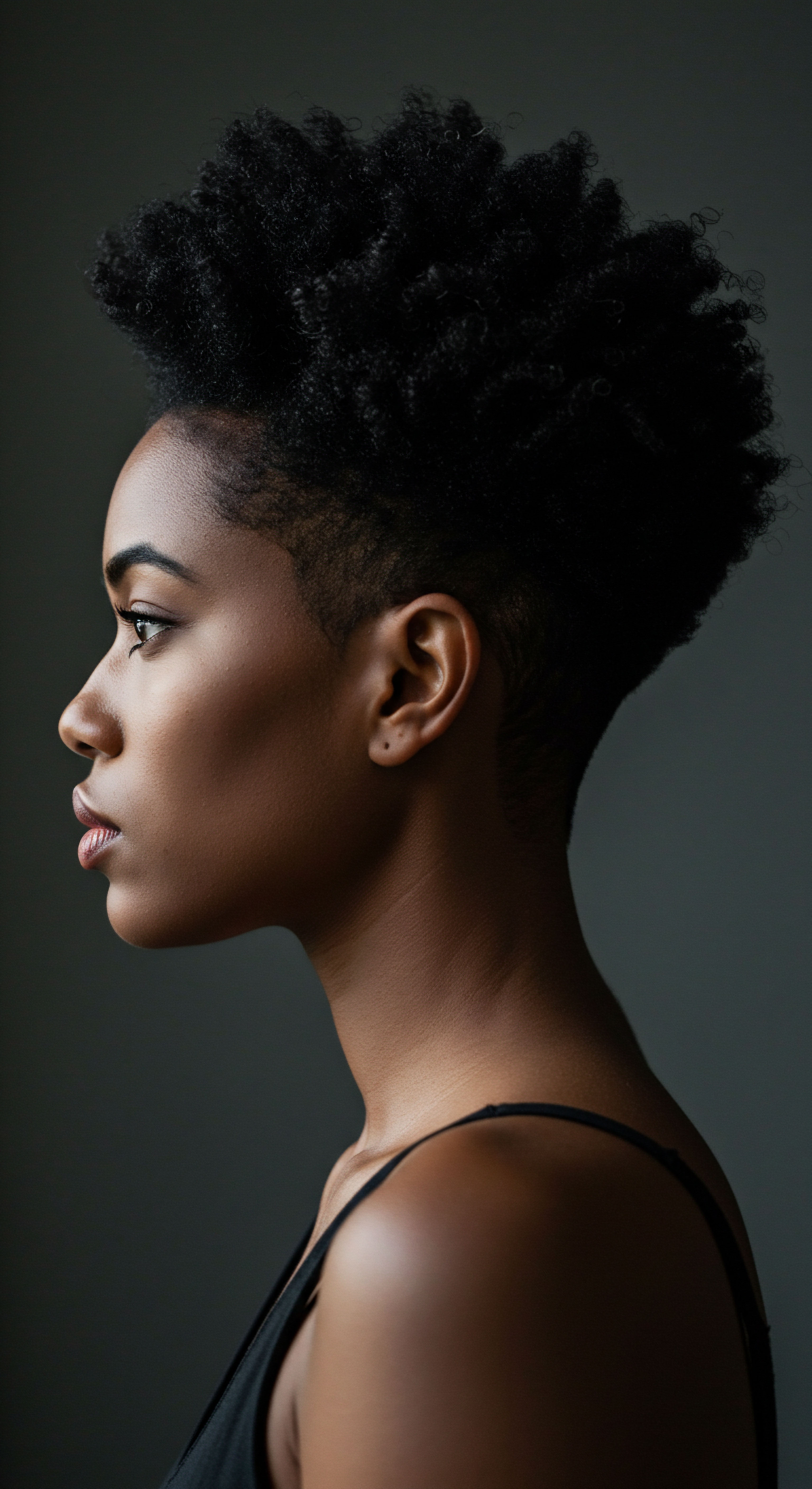
The Essential Lexicon of Textured Hair
Language shapes perception, and the terms we use to discuss textured hair carry significant weight. Moving beyond outdated or derogatory descriptions, a lexicon has grown to celebrate the beauty and complexity of these hair types. Words like Coily, Kinky, Curly, and Wavy are now used descriptively, stripped of historical negative connotations. Terms like Shrinkage, which describes the apparent shortening of hair due to its coil pattern, are understood as a natural characteristic, not a flaw.
The conversation also embraces terms like Protective Styles, acknowledging techniques that shield delicate strands from environmental stressors and manipulation. Concepts such as Low Porosity or High Porosity become vital descriptors, guiding product selection and hydration strategies. This shared vocabulary not only aids in effective communication among those with textured hair but also serves as a tool for affirmation, normalizing and celebrating its unique attributes. When we have the words to describe our hair with precision and pride, we also gain a deeper appreciation for its natural form.

Hair Growth Cycles And Influencing Factors
Hair, regardless of its texture, follows a cyclical pattern of growth, rest, and shedding. This cycle, comprising the anagen (growth), catagen (transition), and telogen (resting/shedding) phases, is a continuous process that influences hair health and appearance. For textured hair, understanding these cycles is particularly relevant, as certain styling practices or environmental factors can inadvertently disrupt this natural rhythm.
The duration of the anagen phase, which can last from two to seven years, largely determines the maximum length a hair strand can achieve. Genetic predispositions play a primary role in the length of this phase. External factors, including nutrition, stress levels, hormonal balances, and even certain medications, can significantly impact the health of the hair follicle and, consequently, the hair growth cycle. Chronic stress, for instance, can prematurely push hair follicles into the resting phase, leading to increased shedding.
For individuals with textured hair, minimizing manipulation and ensuring proper scalp health can support a healthy growth cycle. Practices that reduce tension on the scalp and strands, coupled with a nutrient-rich diet, help create an optimal environment for robust hair growth. This holistic consideration of the hair’s life cycle reinforces the idea that hair health is interconnected with overall bodily well-being, fostering a more mindful approach to care.

Ritual Crafting Intentional Hair Care
Moving beyond the foundational understanding of textured hair, we step into the realm of daily and periodic practices—the rituals that shape our hair’s vitality and our personal connection to it. This section delves into the practical wisdom and gentle techniques that honor the inherent beauty of textured strands. It’s about discerning which approaches truly serve the hair, moving with its natural inclination rather than against it. Here, we explore the purposeful acts of care that, when woven into a consistent regimen, become acts of self-affirmation, contributing not only to the health of the hair but to a deeper sense of personal well-being.

Protective Styling Encyclopedia
Protective styles stand as a testament to the understanding of textured hair’s delicate nature and its need for thoughtful care. These styles minimize daily manipulation, reduce exposure to environmental elements, and help retain moisture, thereby safeguarding the hair’s length and strength. From simple twists and braids to more elaborate cornrows and buns, the options are as varied as the textures they protect.
A well-executed protective style allows the hair to rest and recuperate from the constant pulling, tugging, and combing that daily styling often entails. It creates a shield against friction from clothing, pillowcases, and even the elements. When hair is tucked away, it is less prone to breakage and split ends, enabling it to retain length that might otherwise be lost through mechanical damage.
The key to successful protective styling lies in ensuring that the styles are not too tight, which can cause tension alopecia, and that the hair beneath remains moisturized and cared for. This gentle approach ensures that the protective style truly serves its purpose, promoting hair health rather than hindering it.
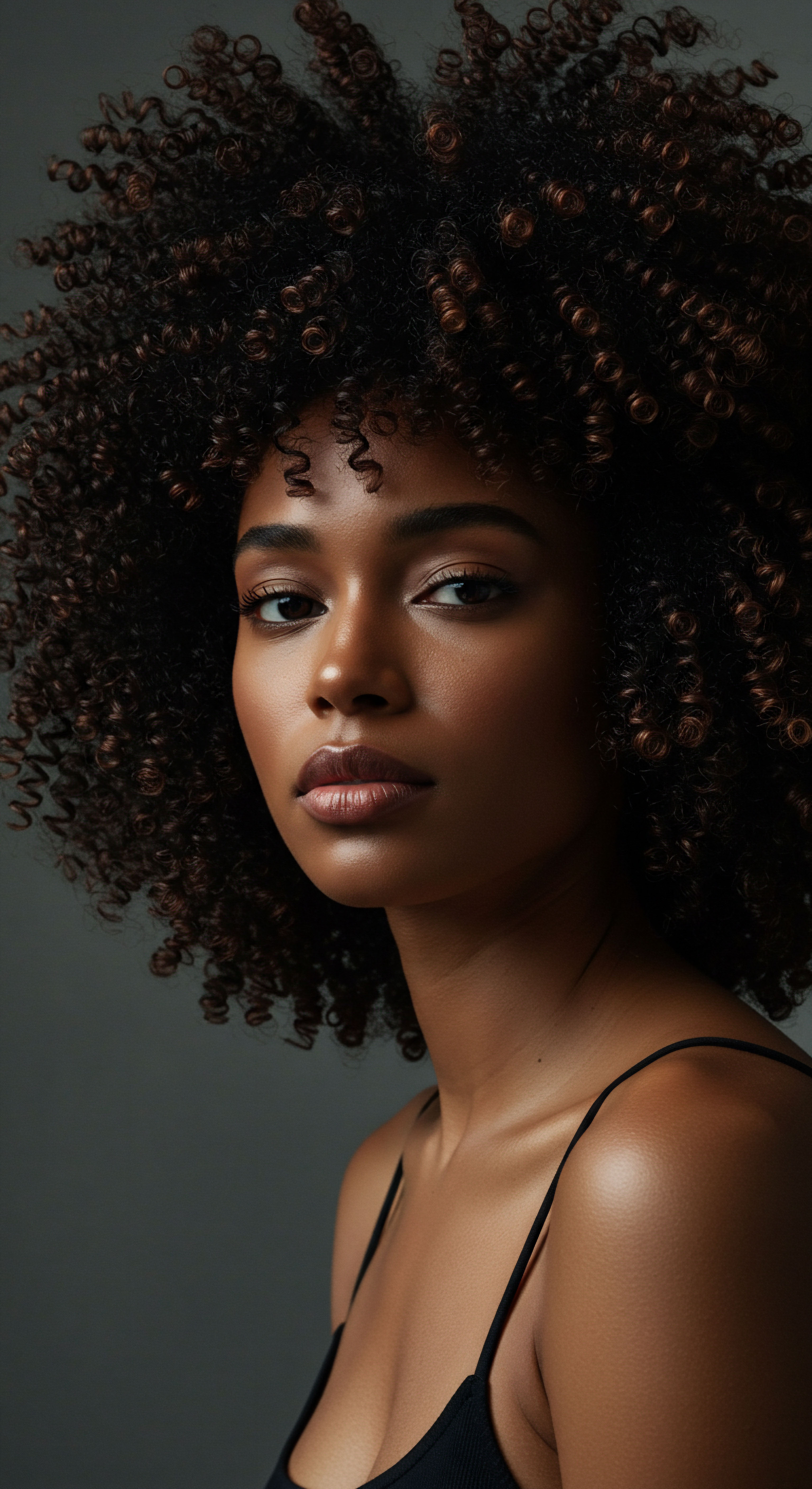
Natural Styling And Definition Techniques
The art of natural styling celebrates the inherent curl, coil, and wave patterns of textured hair, allowing its true character to shine. Techniques like the Wash and Go, Twist-Outs, and Braid-Outs are designed to enhance definition and volume, creating styles that are both visually appealing and respectful of the hair’s natural form. These methods often involve applying hydrating products to wet or damp hair, then allowing the natural curl pattern to set as it dries.
Achieving optimal definition requires a keen understanding of one’s specific hair porosity and density, as these factors influence product absorption and hold. For instance, low porosity hair may benefit from lighter products that don’t sit on the strand, while high porosity hair might welcome richer creams and butters. The deliberate act of defining curls, section by section, can become a meditative practice, fostering patience and a deeper connection to one’s hair. This intentional styling, born from a desire to reveal the hair’s innate beauty, transcends mere aesthetics, becoming a ritual of self-acceptance and quiet confidence.
Intentional styling and care rituals, from protective measures to natural definition, serve as acts of self-affirmation for textured hair.
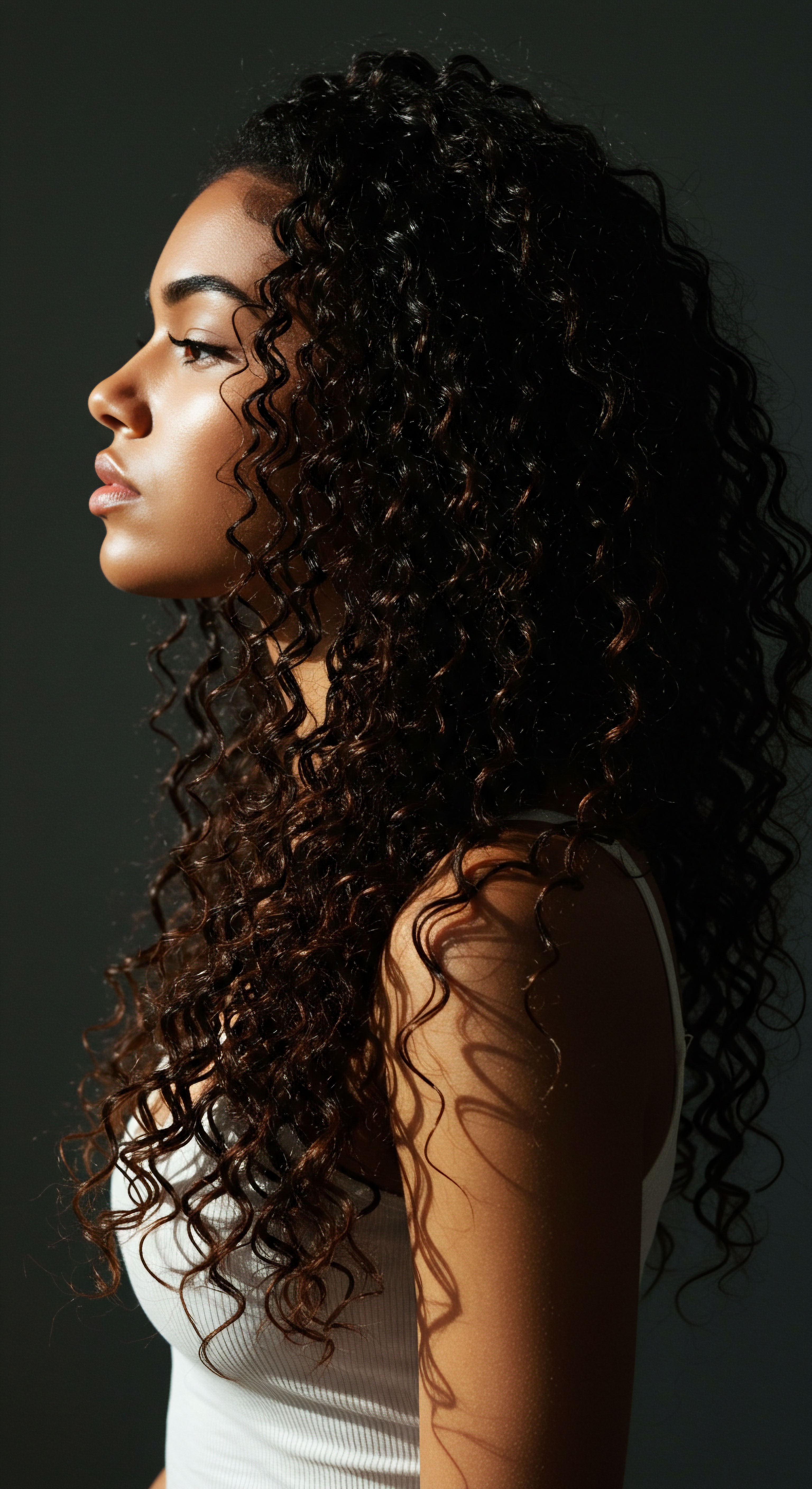
Wigs And Hair Extensions Mastery
Wigs and hair extensions, often viewed through a purely aesthetic lens, hold significant value in the world of textured hair care as tools for versatility and protection. They offer an opportunity to experiment with different lengths, colors, and textures without altering one’s natural hair. Beyond their transformative visual appeal, they can also serve as effective protective styles, shielding the natural hair from daily manipulation, heat, and environmental stressors.
Mastering the use of wigs and extensions involves selecting high-quality pieces that allow the scalp to breathe and the natural hair to remain moisturized underneath. Proper installation techniques are paramount to avoid tension and breakage, ensuring that the protective benefits are fully realized. The ability to switch between looks, while knowing one’s natural hair is resting safely, contributes to a sense of freedom and creative expression. This mastery extends to the careful maintenance of both the natural hair and the hairpieces, recognizing them as interconnected elements of a holistic hair care practice.

Heat Styling And Thermal Reconditioning With A Safety-First Approach
While the celebration of natural texture is paramount, there are instances where heat styling or thermal reconditioning may be desired. When approached with a safety-first mindset, these techniques can be incorporated into a regimen without compromising long-term hair health. The delicate nature of textured hair, with its fewer cuticle layers at the bends, makes it particularly susceptible to heat damage.
The absolute cornerstone of any heat application is the use of a high-quality heat protectant. This product forms a barrier between the hair shaft and the heat source, minimizing direct thermal impact. Furthermore, using the lowest effective temperature setting on styling tools and limiting the frequency of heat application are non-negotiable practices.
Thermal reconditioning, a more permanent chemical process, requires the guidance of a skilled professional who understands the unique structural integrity of textured hair. When considering any form of heat, the focus remains on preserving the hair’s moisture balance and structural integrity, ensuring that temporary style transformations do not lead to lasting damage.
| Precautionary Measure Heat Protectant Application |
| Why It Matters for Textured Hair Creates a thermal barrier, reducing direct heat transfer to delicate, coily strands. |
| Precautionary Measure Low Temperature Settings |
| Why It Matters for Textured Hair Minimizes cuticle lifting and protein denaturation, preserving hair's internal structure. |
| Precautionary Measure Limited Frequency |
| Why It Matters for Textured Hair Reduces cumulative damage, allowing hair to recover and maintain its natural moisture. |
| Precautionary Measure Professional Consultation |
| Why It Matters for Textured Hair Crucial for chemical thermal reconditioning to assess hair integrity and prevent irreversible damage. |
| Precautionary Measure Prioritizing hair health through diligent heat protection is vital for maintaining vibrant textured hair. |

The Complete Textured Hair Toolkit
Just as an artist selects their brushes with care, so too does an individual with textured hair assemble a toolkit designed to honor and protect their strands. The right tools can make a significant difference in minimizing breakage, distributing products evenly, and detangling with ease.
Key components of a thoughtful textured hair toolkit often include:
- Wide-Tooth Comb ❉ Essential for detangling wet hair, minimizing pulling and breakage.
- Denman Brush or Similar Detangling Brush ❉ Aids in defining curls and gently removing tangles without excessive tension.
- Microfiber Towel or Old T-Shirt ❉ Reduces frizz and minimizes friction compared to traditional terry cloth towels.
- Satin or Silk Scarf/bonnet/pillowcase ❉ Protects hair from friction and moisture loss during sleep.
- Spray Bottle ❉ Ideal for refreshing curls with water or diluted product.
Beyond these staples, specific tools like diffuser attachments for blow dryers (to enhance curl definition with gentle heat) or precise sectioning clips (for organized styling) can further enhance the hair care experience. Each tool, when used with intention and understanding, becomes an extension of a gentle, mindful approach to hair care, supporting the hair’s natural resilience and beauty.

Relay The Interconnectedness of Hair and Health
Having explored the foundational characteristics of textured hair and the intentional practices that honor its unique nature, we now turn to a deeper consideration ❉ how the cultural affirmation of natural hair profoundly influences overall well-being. This section ventures beyond the visible, delving into the intricate interplay of biological, psychological, social, and cultural factors that shape our experience of hair. It seeks to illuminate how the journey of embracing one’s natural texture can become a powerful catalyst for improved health, not merely as an aesthetic choice, but as a deeply rooted act of self-care and cultural pride.

Can Hair Affirmation Mitigate Health Disparities?
The act of affirming natural hair is far more than a style preference; it is a profound declaration of identity that can carry significant health implications. Historically, societal pressures and discriminatory practices have often forced individuals with textured hair to chemically or mechanically alter their hair to conform to Eurocentric beauty standards. This constant pressure to assimilate, often driven by fear of professional or social repercussions, can lead to chronic stress, a known contributor to various health disparities.
Research highlights a tangible link between racial discrimination and adverse health outcomes. A compelling study by Dr. Y. Elaine Hairston, Dr.
Valerie M. Harvey, and Dr. Adam J. Friedman (2020) , published in the Journal of the National Medical Association, explicitly discusses “Hair Discrimination and Health Disparities.” This work details how discrimination based on hair texture contributes to significant psychological stress, anxiety, and depression among Black individuals.
The chronic nature of this stress, stemming from everyday microaggressions and systemic barriers, is further linked to physiological responses such as elevated cortisol levels, increased inflammation, and a higher risk of conditions like hypertension and cardiovascular issues. When cultural affirmation of natural hair becomes widespread, it challenges these discriminatory norms, potentially reducing the psychological burden and, by extension, mitigating some of these stress-related health disparities. The freedom to wear one’s hair authentically can be a powerful antidote to the pervasive stress of non-conformity.
Cultural affirmation of natural hair can significantly reduce the psychological and physiological stress linked to discrimination, potentially lessening health disparities.
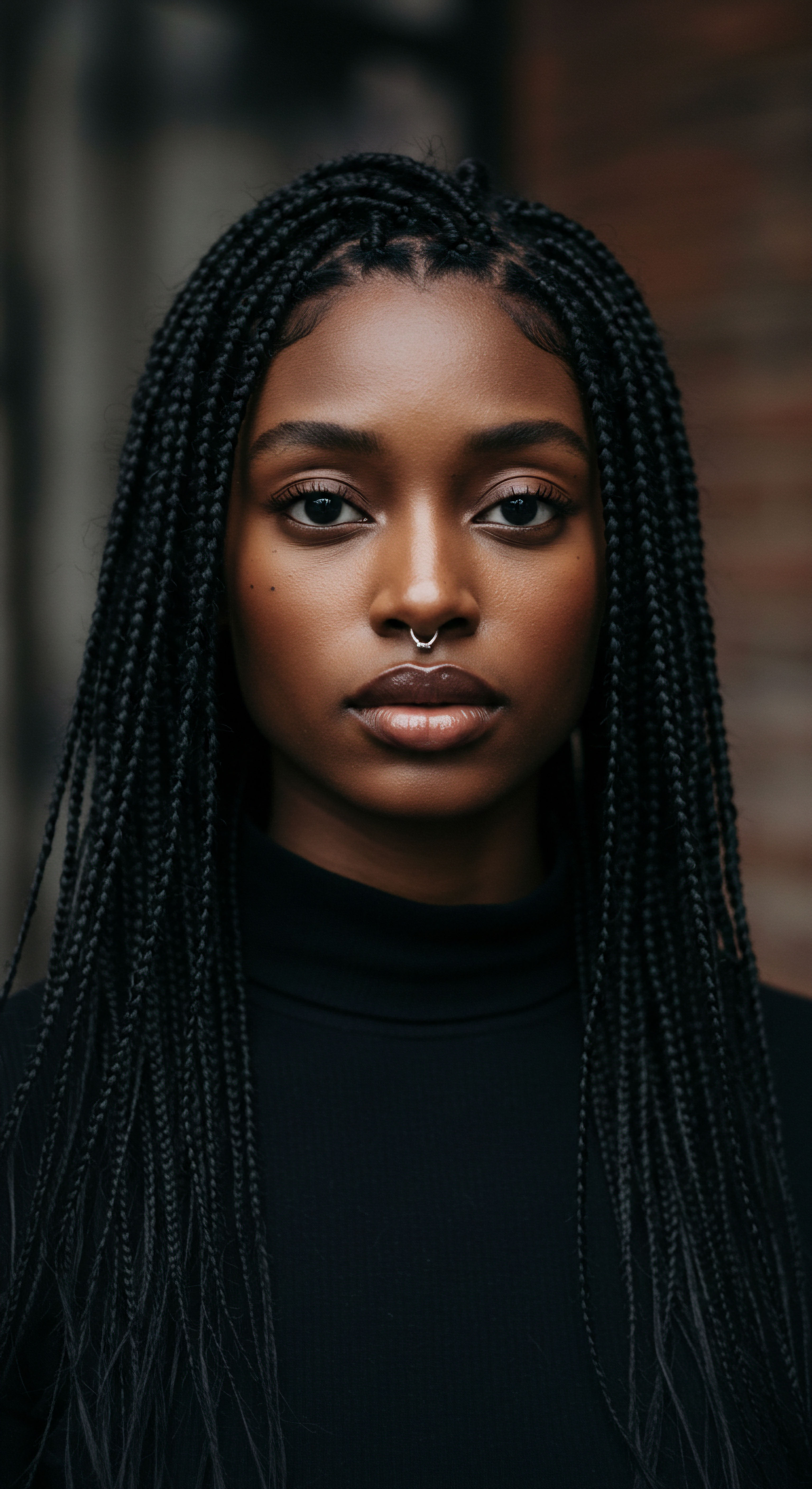
The Psychological Radiance of Self-Acceptance
The decision to embrace natural hair often marks a pivotal moment in an individual’s life, signaling a profound journey of self-acceptance and self-love. This internal shift radiates outward, influencing mental and emotional health in tangible ways. When individuals no longer feel compelled to alter their hair to meet external expectations, a heavy burden is lifted. This liberation fosters an enhanced sense of self-esteem and confidence.
The process of learning to care for natural hair, understanding its unique needs, and celebrating its beauty can become a deeply empowering experience. It often involves reconnecting with cultural heritage and ancestral practices, strengthening a sense of belonging and identity. This connection to a larger cultural narrative can serve as a protective factor against the psychological distress often associated with marginalization.
The joy derived from seeing one’s natural hair thrive, from feeling authentically represented, contributes to a positive self-image, which is a cornerstone of robust mental health. This affirmation cultivates resilience, equipping individuals to navigate societal pressures with greater fortitude.

How Does Cultural Heritage Influence Hair Care Practices?
Hair care practices, particularly within textured hair communities, are often deeply rooted in cultural heritage and traditions passed down through generations. These practices are not merely about aesthetics; they embody collective knowledge, communal bonding, and a profound respect for the hair as a symbol of identity and resilience. The affirmation of natural hair often involves a reclamation of these traditional methods, moving away from chemical alterations towards practices that have sustained healthy hair for centuries.
Consider the use of natural ingredients like shea butter, coconut oil, and various herbal infusions, which have been staples in African and diasporic hair care for generations. These ingredients, often rich in nutrients and emollients, contribute to hair health by providing moisture, strengthening strands, and promoting scalp vitality. The communal aspects of hair braiding, twisting, and styling sessions, often occurring within families or social gatherings, also play a significant role.
These moments foster intergenerational connections, transmit knowledge, and strengthen social support networks, all of which are vital components of holistic well-being. By embracing these culturally informed practices, individuals are not only caring for their hair but also honoring their heritage, strengthening community ties, and reinforcing a sense of belonging.

The Societal Shift And Its Health Ramifications
The increasing visibility and acceptance of natural hair in mainstream society represent a significant cultural shift with far-reaching health ramifications. Legislative efforts, such as the CROWN Act in the United States, which prohibits discrimination based on hair texture and protective hairstyles, are instrumental in validating natural hair in professional and academic settings. These legal protections dismantle barriers that previously forced individuals to choose between their authentic selves and their livelihoods or education.
When individuals are no longer penalized for their natural hair, the chronic stress associated with code-switching and assimilation diminishes. This reduction in systemic pressure contributes to improved mental health, fostering environments where individuals can thrive without fear of judgment or reprisal. Furthermore, the broader societal affirmation of natural hair cultivates a more inclusive beauty standard, challenging narrow definitions of attractiveness and promoting diverse representations.
This wider acceptance not only reduces individual psychological burdens but also contributes to a healthier collective consciousness, where diversity is celebrated rather than suppressed. The ripple effect of this societal embrace extends to reduced stress, enhanced self-worth, and a greater sense of belonging, all foundational to holistic health.

Reflection An Enduring Connection
The journey through the roots, rituals, and profound relays of textured hair reveals a truth far deeper than surface appearance. It unveils a delicate yet enduring connection between our strands and our spirit, between cultural heritage and personal health. To affirm natural hair is to engage in a continuous act of self-love, a quiet rebellion against historical impositions, and a joyful celebration of identity.
It is a path that, with each gentle touch and each knowing glance in the mirror, nurtures not only the vibrancy of our coils and curls but also the quiet strength of our inner landscape. The health benefits, both seen and unseen, stand as a testament to the profound wisdom held within our natural form.

References
- Hairston, Y. E. Harvey, V. M. & Friedman, A. J. (2020). Hair Discrimination and Health Disparities. Journal of the National Medical Association, 112(5), 503-507.
- Dillard, J. T. et al. (2014). African American Women’s Hair ❉ An Exploration of the Relationship Between Hair, Racial Identity, and Self-Esteem. Journal of Black Psychology, 40(4), 339-361.
- Hunter, M. (2011). Buying Racial Justice ❉ Fairness, Freedom, and the Costs of Inequality. Routledge. (Discusses economic and social pressures on Black women, including hair choices).
- Mercer, K. (1994). Welcome to the Jungle ❉ New Positions in Cultural Studies. Routledge. (Explores the cultural politics of hair and identity).
- Byrd, A. D. & Tharps, L. D. (2014). Hair Story ❉ Untangling the Roots of Black Hair in America. St. Martin’s Griffin. (Provides historical and cultural context for Black hair practices).
- Banks, I. (2000). Hair Matters ❉ Beauty, Power, and Black Women’s Consciousness. New York University Press. (Examines the social and psychological significance of hair for Black women).
- Tate, S. (2009). Black Beauty ❉ African American Women and the Politics of Race and Identity. Ashgate Publishing. (Discusses beauty standards and self-perception).